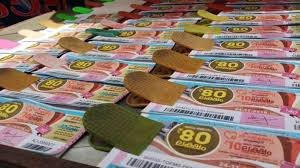Would you spend a few bucks on a lottery ticket that might turn you into a Crorepati overnight? Tempting, isn’t it? The dream of hitting a jackpot worth lakhs or crores has a magnetic pull. And if you said yes, you’re not alone. Every day, millions of Indians take this chance.
Kerala, however, stands out in this arena.
Residents of the state collectively spend a staggering ₹43 crore daily on lottery tickets. To put it into perspective, in December 2023, the Kerala State Lotteries Directorate printed over 1.8 crore tickets each day.
But this system isn’t just about luck or dreams—it’s about a well-oiled financial machine.
The Mechanics Behind Kerala’s Lottery System
Established in 1967, Kerala’s lottery system operates under the state Finance Ministry. It boasts a level of regulation and transparency rarely seen in the country. Weekly lotteries like Pournami, monthly draws, and bumper lotteries for festivals such as Onam and Christmas—with prize pools reaching ₹25 crore—keep excitement levels high throughout the year.
To prevent fraud, tickets feature advanced security measures, including QR codes, color codes, and unique barcodes. Draws are conducted under strict supervision to maintain integrity.
This success has inspired Kerala to expand its lottery operations beyond state borders. The state plans to appoint authorized agents in selected regions, potentially unlocking another revenue stream.
And why not? Lotteries already bring in massive income. In FY24, Kerala earned about ₹12,500 crore from lottery sales—up from ₹11,800 crore in FY23 and ₹7,000 crore in FY22. These revenues account for 70-80% of the state’s non-tax income. After deducting prize payouts, agent commissions, and operational expenses, the government retains roughly ₹3,500 crore annually.
Beyond Revenue: Social and Economic Benefits
The revenue supports crucial welfare programs like the Karunya Benevolent Fund, which aids medical treatments for serious illnesses. Moreover, the lottery system sustains a vast network of 55,000 agents and 1.5 lakh retailers, providing livelihoods to thousands.
The Flipside of the Jackpot
However, the system isn’t without flaws. Lotteries often target lower-income groups, offering them the dream of a better life. Many end up spending a significant portion of their earnings on tickets, sometimes sacrificing basic needs or savings. At ₹40 per ticket—₹9 of which goes toward GST—the cost adds up quickly.
This heavy reliance on lotteries, alongside alcohol and petroleum, raises red flags. Together, alcohol and lotteries contribute about 25% of Kerala’s revenue. This dependence creates a fragile financial foundation. Should public interest in lotteries decline, the state’s finances could suffer severely.
The Broader Economic Picture
Unlike other states, Kerala hasn’t attracted major industrial investments. Instead, it relies heavily on remittances from its global diaspora. Compounding this issue is a debt-to-GSDP ratio of 35%, significantly higher than the national average of 25%. Debt servicing, welfare programs, and pensions further strain the state’s resources.
Economists also warn of the social costs. Gambling addiction linked to lotteries can push individuals into financial ruin. Low-income families, enticed by jackpot dreams, often borrow money to buy more tickets, leading to deeper financial instability.
Additionally, the constant diversion of small savings into lottery purchases stifles productive investments. Disposable income that could stimulate local businesses or boost bank savings ends up funding a gamble, hindering microeconomic growth.
The Verdict: A Risky Masterstroke
On the surface, Kerala’s lottery system seems like a financial genius. It funds welfare programs and strengthens state finances. But beneath this success lies a risky overdependence on a volatile revenue source.
What happens if public sentiment shifts or the allure of lotteries fades? Without diversification and a forward-looking strategy, Kerala risks turning today’s jackpot into tomorrow’s financial Achilles’ heel.

 Business
Business




